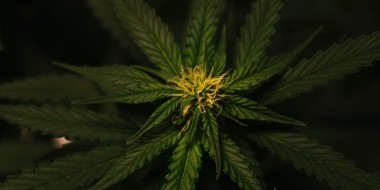Westminster, CO--Hemp (Cannabis sativa L.) is used to produce a variety of products – from building materials, textiles, and paper to nutritious seeds, CBD oils, and extracts. Though the crop was introduced in the U.S. centuries ago, scientists with the Weed Science Society of America (WSSA) say much work remains to develop safe and effective approaches to weed control that growers can rely on.
[Photo by Washarapol D BinYo Jundang via Pexels]
Why the lag? For many decades hemp crops were prohibited by laws and regulations that categorized all varieties of cannabis as controlled substances. The regulatory landscape changed in 2018 when a U.S. Farm Bill authorized hemp as an agricultural product, and the Drug Enforcement Agency removed hemp crops with a concentration of no more than 0.3 percent of the psychoactive compound THC from its schedule of controlled substances. The law uses this lower level of THC to distinguish hemp from marijuana.
Despite these changes at the national level, each state retains the authority to establish its own processes for issuing licenses and monitoring hemp production. As a result of these varying regulations and the newness of the revitalized market, experts say weed control tools and protocols for hemp crops have yet to catch up.
“In effect, it’s an old crop that’s brand spanking new,” says Lynn Sosnoskie, Ph.D., an assistant professor at Cornell University and a member of the WSSA board of directors, in a press release. “Past regulations that banned hemp production also meant a ban on research. As a result, we lack even a basic understanding of how competitive hemp is against weeds.”
With a grant from the U.S. Department of Agriculture, Sosnoskie is working with weed science colleagues at Virginia Tech, Southern Illinois University, North Dakota State University and Clemson University to fill the gap and provide growers with evidence-based, location-specific weed control strategies. Their multistate study will explore the impact of plant varieties, planting times, cultivation, cover crops, mulching and other techniques that may help to keep weeds at bay.
Work is also underway on the herbicide front thanks to the Inter-regional Research Project #4 (IR-4), an organization focused on registration of reduced-risk herbicides, insecticides and fungicides for specialty crops such as hemp.
According to Roger Batts, weed science biologist at IR-4, the organization is conducting screening trials to evaluate the potential effectiveness of existing herbicides that might be used in hemp. Once the best-performing technologies are identified, IR-4 hopes to conduct further performance and/or residue studies needed to support product registration.
One example: An IR-4 residue study is now underway for the postemergence grass herbicide quizalofop. “This is our first herbicide residue trial in hemp, and we hope to submit the results to the Environmental Protection Agency (EPA) in 2024,” Batts says in the release. “If approved, it will represent a new tool for weed control in hemp grown for fiber, seed and processed seed commodities like flour and protein-rich hemp hearts.”
IR-4 has also submitted existing residue data to EPA to support the use of ethalfluralin in hemp. A proven herbicide for the preemergence control of certain annual grasses and broadleaf weeds, the product is already registered for use in industrial hemp in Canada. EPA is expected to publish a tolerance soon for the use of ethalfluralin in hemp grown in the U.S. for fiber and seed.
Link to the entire release.
